
What is untreated and treated wood? That’s a question that’s been asked by many of the people who read these articles, and basically, untreated wood is like a freshly cut piece of wood, or lumber. The strength of these wood pieces is that they’re porous, meaning that they usually give off a natural wood smell and can help to absorb odors in the house.
When making the choice to buy untreated wood instead of wood that has been treated with wood oil, paint, and varnish, you’re choosing not just an aesthetic decor item but a material as well. The difference between the layers of oil paint and lacquer makes untreated wood much more sensitive to how it can be cleaned.
This also means that using things like chemical cleaning agents will be completely inappropriate for your untreated wood furniture, and you should look to opt for alternative methods using simply natural elements and tools.
In this article, we will be discussing three main ways to clean untreated wood, as well as the pros and cons of each! Let’s go!
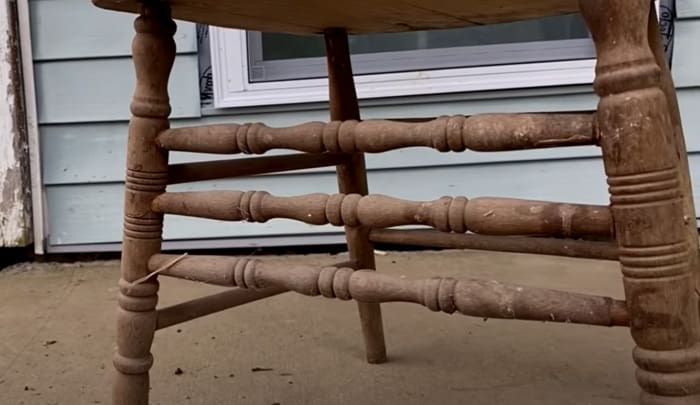
.
“When dealing with untreated wood, gentleness is crucial. Using a soft bristle brush to dislodge dirt and grime, followed by a damp cloth is effective in most cases. Highly abrasive materials or harsh chemicals can damage the wood’s natural grain. Remember, every piece of wood tells a story – make sure it’s one of proper care and preservation.”
Dr. Gideon Pomroy, PhD Wood Science
These are the tools that you will require
In order to do these steps, you will need a soft microfiber cloth, washed and dried to be clean before starting the process. It would be good to have both a dry and a wet soft cloth, and if you have one, you can standby a brush at hand too.
Next, you’ll also need vinegar, a bucket or a container of some sort, water, soap, or commercial wood cleaners depending on which method you’re using.
Clean the surface with a cloth
Firstly, before doing anything, it’s important to first give the surface a gentle clean. With a cloth and some water, no more than 150 ml of water, excessive amounts of water will bloat the wood. This helps get rid of basically anything that’s superficial and skipping this could get in the way of cleaning later.
This part is also important because it’s where you start to look out for certain key types of dirt along with the key characteristics of the wood that will help your cleaning process.
While you are going over with a first wipe to get rid of food or dust or other large surface objects, you should observe how quickly the wood in question absorbs water. In the case where the moist streaks from your cloth seem to be drying up and disappearing almost immediately, your wood is absorbent. Then, it is best to make sure to use a dry cleaning method.
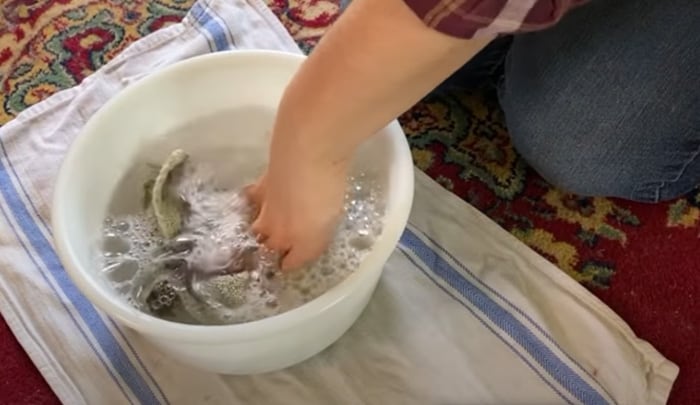
If you’re also familiar with the wood and when it was harvested and woodworked to fit into your home, then you should also evaluate whether it is old wood, every type of wood is different, but usually a piece that is at least 5 years can be considered to be old enough. Newer woods will have stronger resistance to pressure whereas older woods, as well as some specific woods like pinewood, might have the stains very deeply absorbed into the material.
Lastly, before you begin doing any of these methods to the entire surface of the table, make sure to test it on a specific section of the table. If possible, use all three methods on little segments of wood beside each other and wait a while. Then, observe which method worked best and didn’t damage your wood, and continue.
Using vinegar
This method requires you to use vinegar. Vinegar is quite well known within DIY/home and wellness communities as being the wonder of cleaning materials. As opposed to harsh formulated chemical cleaning agents, enthusiasts of home and cleaning tend to prefer using natural solutions that also double up as cooking ingredients.
There’s a chance you already have some white vinegar in your kitchen. Besides being an essential condiment to fish and chips, vinegar is acidic in nature and works as a lovely and strong cleaning tool. Vinegar, however, has two main cons right out of the bottle.
Firstly, it’s too harsh on your wood. Secondly, it stinks to high heaven. Unless this is a table you’re putting out on the lawn that will eventually sun-dry, you probably don’t want the smell of vinegar all over your house for the next 24 to 48 hours. Moreover, since wood is porous, it will absorb the scent and then diffuse that for a long while.
To combat this, first, dilute one part vinegar to three parts of water. This should already mask quite a bit of the scent. Then, split some of the diluted vinegar out into other containers where you will add different essential oils such as lavender or rosemary, see which works best not only to mask the smell of vinegar but also not clash with the smell. This is very important since, after cleaning, if you use the right combination of essential oil, your untreated wood surface will act as a massive diffuser and actually improve the smell of your place.
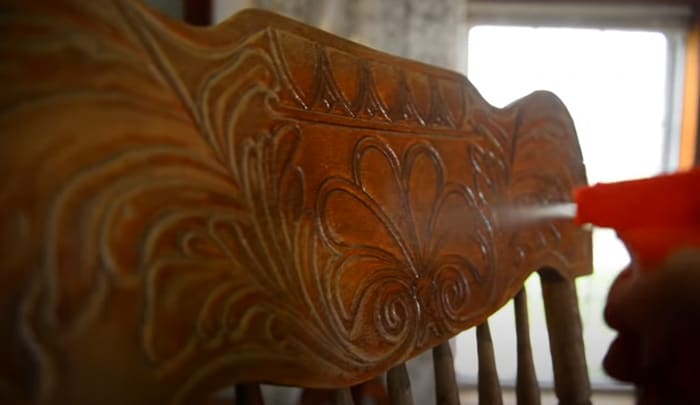
Using Water & Soap
This step is very much self-explanatory. Use your water and soap together to make a soapy water solution, combine one tablespoon of soap for every 500 ml of water. Wipe the surface of your untreated wood evenly with the damp soapy cloth and then make sure to use a brush or the dry cloth to get into the corners.
A common trick here is to use a flathead screwdriver or something of that sort and wrap your damp cloth around it to get into the corners to clean. If you’re feeling that the table is clean, you can wash your damp cloth and wet it again with just tap water to rinse off after any soap suds that might still be on your wood surface after 5 minutes before air-drying it.
Remember that untreated wood acts like a sponge, it will absorb liquids and get bloated.
Using commercial wood cleaners
Wood cleaners are perfect for the job if you happen to have access to them since they are perfectly formulated for wood. The previous two methods are great and all but if you can find a specialized wood cleaner, not only will you be sure about the effects of the cleaning, but it could also save you a lot of time having to prepare the buckets of soapy water or vinegar mixture. Wood cleaners could also have a smell, so still, prepare your essential oils. These products usually contain Ammonium Hydroxide, so use gloves to prevent skin issues. You can also apply a good mold prevention product.
Get the best out of these cleaning methods
These are the three ways most people clean their untreated wood floors and tables! Did we miss anything? Let us know, and if you used the methods here, how did they go? Hope we have helped, that’s been it for us today!
References
https://www.hgtv.com/outdoors/outdoor-remodel/treated-wood-vs-untreated
https://latestkitchenmodels.com/advantages-and-disadvantages-of-unfinished-wood-furniture/

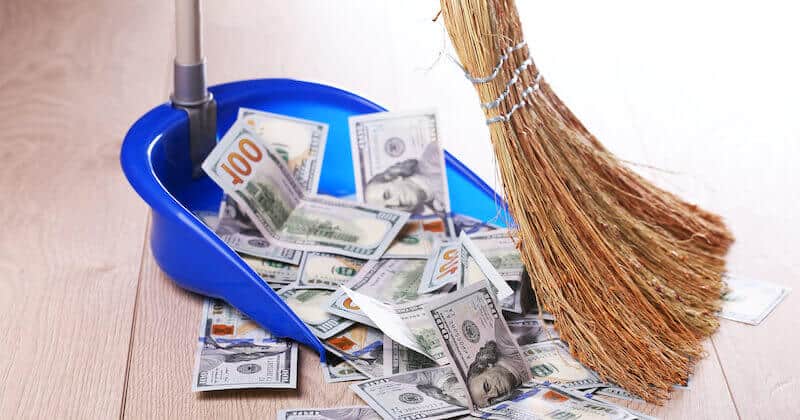
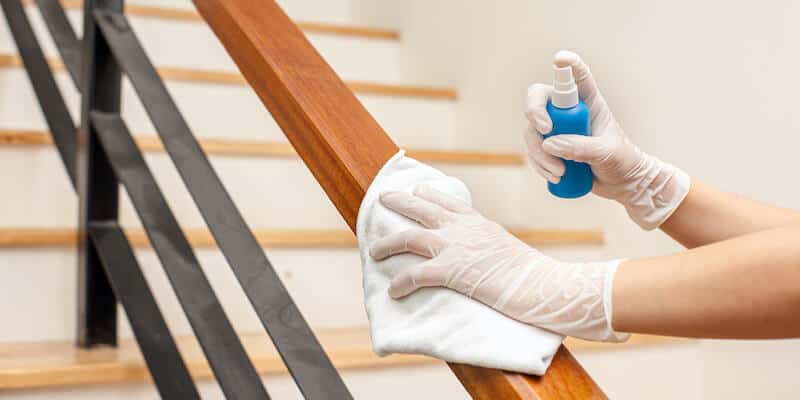
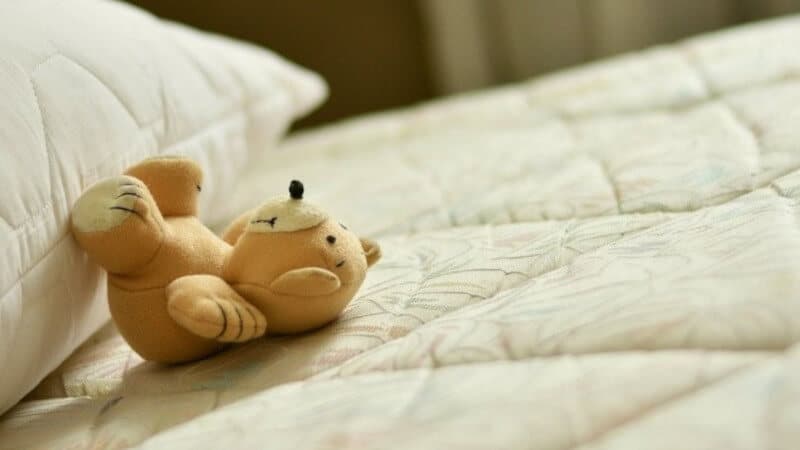
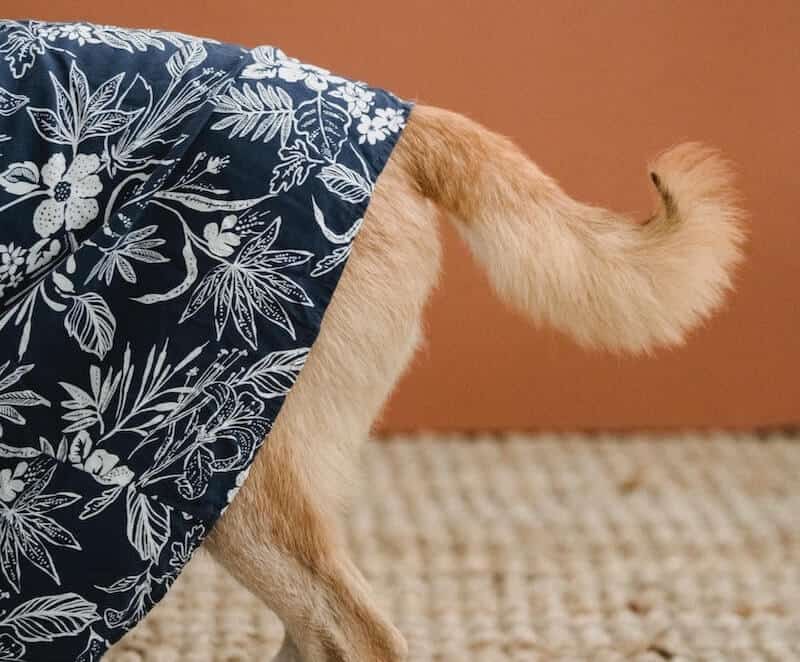
I’ve found that using untreated wood for my various furniture projects brings an unparalleled authenticity and organic feel that treated wood simply can’t match.
Just last month, I crafted an open shelf kitchen unit from untreated pine. The natural grains and the pine scent added a rustic charm that was highly admired by my clients.
Though I wholly resound with the rustic charm that Zander described, what excites me more is being able to witness the character of the wood develop over time. Its natural oxidization, not to mention the enhancement of its grain and patina, presents a uniquely romantic transformation that treated wood simply cannot proffer.
I remember, one sunny afternoon, grabbing my grandfather’s old chisel and carving into a piece of untreated pine. The way it absorbs the sweat, odors and essence of its environment over time, infusing its character within its grains; it’s like a canvas that never ceases to evolve!
I often tell my apprentices that working with untreated wood is like unraveling a mystery — every fresh piece has its unique characteristics waiting to be discovered.
Having worked with several types of untreated woods over the decades, I can attest that each species exudes a distinct aroma and texture that can genuinely measure an atmosphere when made into furniture or decor items. However, despite the charm of the natural look, one must be prepared to deal with potential issues like warping due to moisture absorption or infestations from wood-boring pests. That’s why I’ve developed my own method of treating the wood which preserves its original characteristics while adding some form of protection; ensuring we get the best out of both worlds. This might not be everyone’s approach but it works excellently for projects that require a balance between aesthetics and durability.
Beauregard, I couldn’t agree more. The natural aroma and texture of different species of untreated wood indeed add a certain charm to furniture items that’s hard to replicate. However, your point about warping due to moisture absorption is spot-on, which has led me to follow a similar method as yours, where I treat the wood to an extent while trying to retain its originality. This approach certainly provides reassurance against potential problems like pest infestations or excess moisture absorption.
I find that using a homemade solution of vinegar, water, and a small amount of gentle soap does wonders to clean untreated wood without harming its natural beauty or integrity.